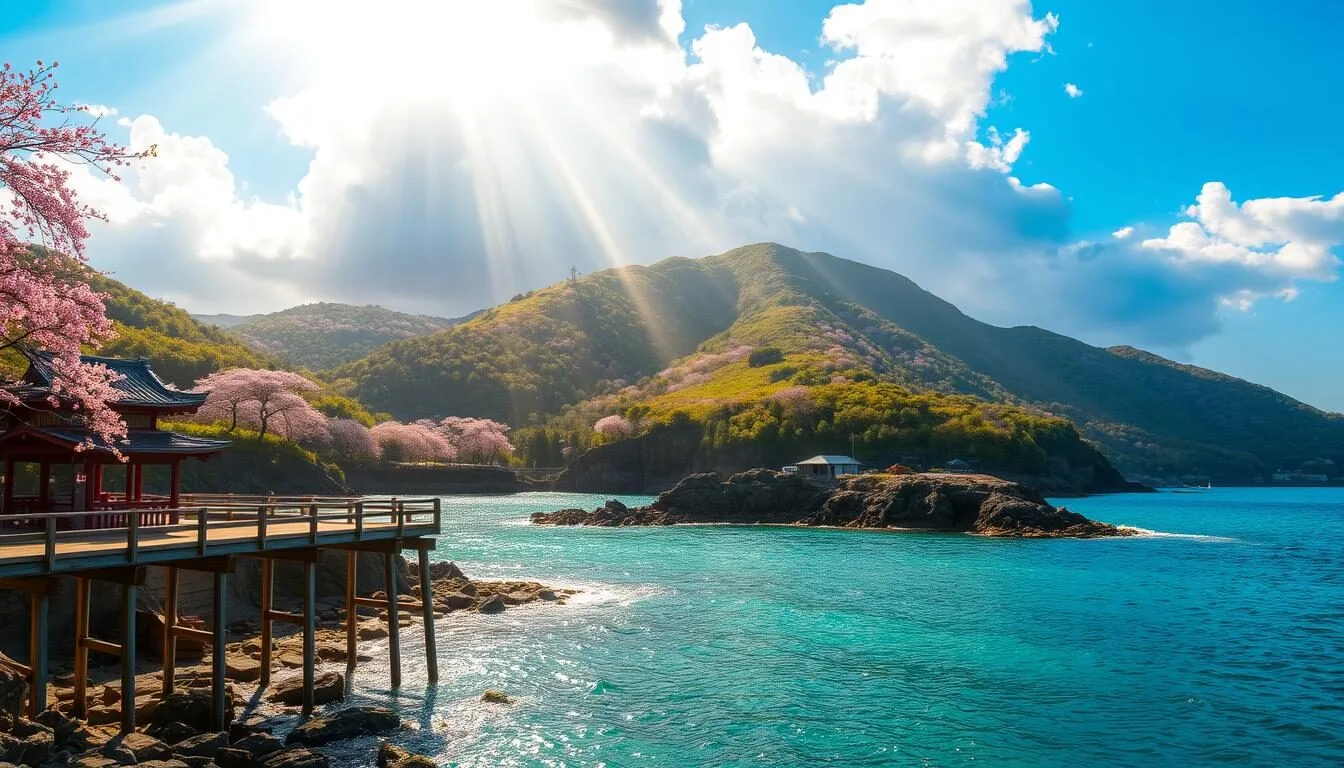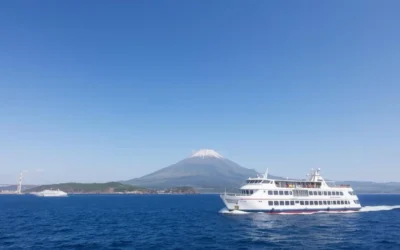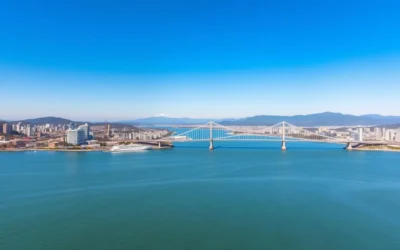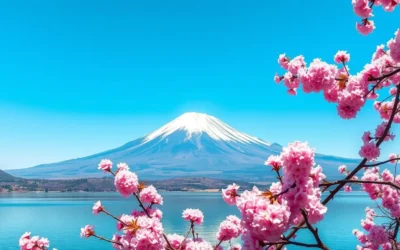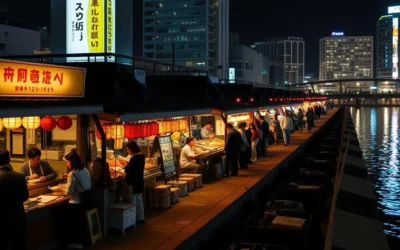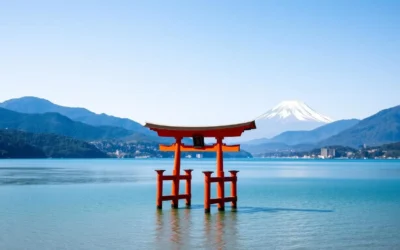✓ Accommodations✓ Flights✓ Rental Cars
Are you looking for an authentic Japanese experience away from the crowds? The Izu Peninsula is a hidden gem located in Shizuoka Prefecture, extending into the Pacific Ocean southwest of Tokyo. This coastal area offers a perfect blend of natural beauty, cultural experiences, and relaxation opportunities, making it an ideal destination for your next trip.
As you explore the Izu Peninsula, you’ll discover a diverse range of attractions that make this area special. From relaxing in hot springs and ryokans to taking in the breathtaking views of Mount Fuji and enjoying pristine beaches, there’s something for every kind of traveler. Whether you’re looking to unwind or experience the local culture, the Izu Peninsula has everything you need for an unforgettable journey.
Discovering the Izu Peninsula: Japan’s Coastal Gem
As you explore Japan, you’ll find that the Izu Peninsula is a must-visit destination, boasting breathtaking views and diverse activities. Located on the eastern coast of Honshu, Japan’s largest island, this picturesque region is easily accessible and offers a wide range of experiences for travelers.
Where is Izu Peninsula Located?
The Izu Peninsula is situated in Shizuoka Prefecture, approximately 100 kilometers southwest of Tokyo. Its proximity to the capital makes it an ideal getaway for those looking to escape the urban hustle and bustle. The peninsula is easily accessible by train or car, with the journey from Tokyo taking around two hours by train or slightly longer by car, depending on traffic.
Why Visit Izu Peninsula?
The Izu Peninsula is a treasure trove of natural beauty, cultural heritage, and relaxation. You can enjoy beautiful beaches, hot springs, and scenic landscapes, making it a perfect destination for various types of travelers. Whether you’re looking for adventure, relaxation, or cultural experiences, the Izu Peninsula has something to offer. From hiking and water activities to visiting historical sites and enjoying local cuisine, the peninsula caters to diverse interests.
One of the key attractions of the Izu Peninsula is its cherry blossoms in the spring. The mild temperatures and stunning natural beauty make it an ideal time for hiking and outdoor exploration. In the summer, the beaches come alive, and water activities become a main attraction. Autumn brings stunning fall foliage, while winter offers a quieter atmosphere, ideal for hot spring experiences and viewing Mount Fuji.
Best Time to Visit Izu Peninsula
Every season has its highlight in the Izu Peninsula. Spring (March to May) offers mild temperatures and beautiful cherry blossoms. Summer (June to August) is popular for beaches and water activities. Fall (September to November) brings mild temperatures and stunning fall foliage. Winter (December to February) is quieter, with few tourists, making it ideal for hot springs and offering higher chances of clear views of Mount Fuji.
Understanding the distinct seasonal attractions is key to planning your trip. Whether you’re looking for cherry blossoms in the spring, beach activities in the summer, comfortable hiking conditions in the fall, or serene hot spring experiences in the winter, the Izu Peninsula is a year-round destination.
Eastern vs Western Izu Peninsula: What’s the Difference?
The Izu Peninsula is split into two contrasting areas: the eastern part, known for its accessibility, and the western part, famous for its breathtaking views of Mount Fuji. Understanding these differences is key to planning your trip and experiencing the best that Izu has to offer.
Eastern Izu: Accessibility and Popular Attractions
Eastern Izu is the more tourist-friendly side of the peninsula, with better public transportation links and a wider range of amenities for visitors. This area is home to popular attractions that draw travelers from across Japan and beyond.
Key Features of Eastern Izu:
- Easy access via public transportation
- Popular tourist attractions
- Wider range of accommodations
Some of the top attractions in Eastern Izu include the Jogasaki Coast, known for its stunning sea views and suspension bridge, and the Kawazu Seven Waterfalls, a beautiful natural spot.
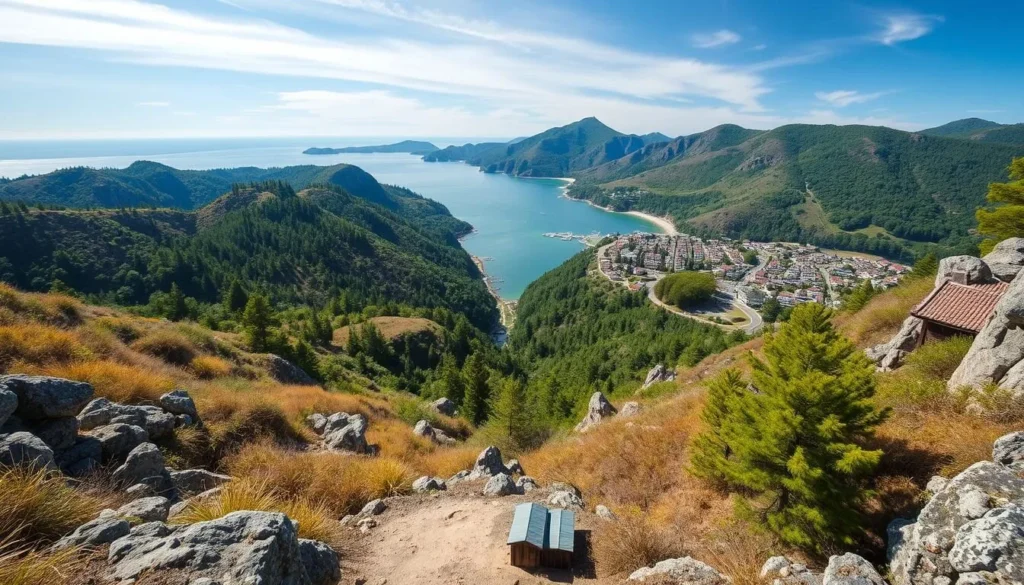
Western Izu: Off-the-Beaten-Path and Mount Fuji Views
Western Izu, on the other hand, offers a more authentic, off-the-beaten-path experience. To explore this side of the peninsula, having a car is essential due to the limited public transportation.
Why Visit Western Izu:
- Unspoiled natural beauty and scenic viewpoints
- Spectacular views of Mount Fuji
- Local, smaller-scale accommodations for a genuine Japanese experience
The town of Mishima serves as a gateway to Western Izu, with the Tokaido-Sanyo Shinkansen providing a convenient link to Tokyo. However, from Mishima, it’s still a one-hour drive to the main Western coast.
| Characteristics | Eastern Izu | Western Izu |
|---|---|---|
| Accessibility | Good public transportation | Limited public transport; car recommended |
| Tourist Infrastructure | More amenities and accommodations | Smaller, local accommodations |
| Attractions | Popular spots like Jogasaki Coast | Scenic viewpoints and Mount Fuji views |
How to Get to Izu Peninsula
To explore the Izu Peninsula, you’ll need to know the best ways to get there and get around. The peninsula is a popular destination for those seeking natural beauty, hot springs, and cultural experiences, and understanding your transportation options is key to a smooth trip.
From Tokyo by Train
Traveling from Tokyo to Izu Peninsula by train is a convenient option. You can take the Odoriko limited express train from Tokyo Station to Ito or Shimoda. The journey takes approximately 2-3 hours, depending on your destination. The Odororo train is a great option as it allows you to enjoy the scenic views of the coastline. You can check the train schedule and book your tickets in advance through the Japan Railways website or at major train stations.
For those heading to the eastern side of the peninsula, the Izukyu Line from Atami is another option. This line connects to several key destinations along the eastern coast, making it easy to visit popular spots like Jogasaki Coast and Shimoda.
By Car: Road Trip Options
Having a car is highly recommended to fully explore the Izu Peninsula, as it provides the freedom to visit remote areas and enjoy the scenic routes at your own pace. The peninsula is accessible via the Tomei Expressway from Tokyo, and then connecting to the Izu-Jugohan Road or other local highways. This mode of travel allows you to discover hidden gems and enjoy the stunning views of Mt. Fuji and the coastline.
Renting a car in Japan is relatively straightforward, with several rental companies available at major train stations and airports. Make sure to choose a company that offers English services and suitable vehicles for your needs.
Public Transportation Within Izu Peninsula
While having a car is ideal, it’s still possible to explore parts of the Izu Peninsula using public transportation. The area is serviced by two main railway lines: the Izu-Hakone line, which runs from Mishima to Shuzenji in central Izu, and the Izukyu Line, which connects Atami along the east coast. Additionally, the Tokai Bus Network covers some areas, although services can be limited, with sometimes only 1-2 buses per day.
To make the most of public transportation, it’s advisable to plan your itinerary in advance and consider combining buses and trains with taxis or guided tours to reach more remote attractions. Purchasing a bus pass or using a prepaid IC card can also make traveling within the peninsula more convenient.
- Understand the limitations of public transportation within the peninsula.
- Learn about the existing bus and train networks.
- Discover strategies for reaching remote areas.
- Get information on bus passes and train tickets.
Experience Authentic Ryokans and Hot Springs
Experience the epitome of Japanese hospitality and relaxation in Izu Peninsula’s renowned ryokans and onsen towns. The Izu Peninsula is a haven for those seeking a tranquil escape from the hustle and bustle of city life, offering a unique blend of natural beauty, traditional culture, and rejuvenating hot springs.
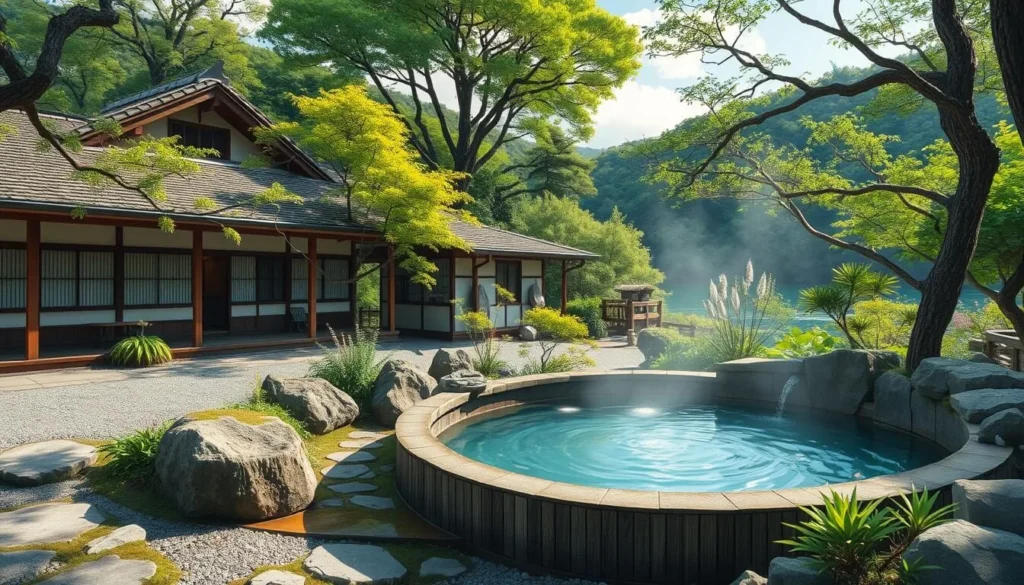
What Makes Izu Ryokans Special
Izu Peninsula’s ryokans are distinguished by their warm hospitality, exquisite kaiseki cuisine, and serene surroundings. These traditional inns offer a glimpse into Japan’s rich cultural heritage, with many ryokans having been family-run for generations.
The unique charm of Izu’s ryokans lies in their ability to seamlessly blend traditional Japanese architecture with modern comforts, creating a truly immersive experience for visitors.
Top Onsen Towns in Izu Peninsula
The Izu Peninsula is home to numerous onsen towns, each with its own unique character and charm. Shuzenji, with its historic hot spring Tokku-no-Yu, is a standout, offering scenery reminiscent of Studio Ghibli’s Spirited Away. Atami and Ito are other popular onsen towns, known for their accessibility and picturesque surroundings.
Visitors can explore these towns, enjoying the local cuisine, shopping, and cultural attractions, alongside the relaxing hot spring experiences.
Ryokan Etiquette for First-Timers
Staying at a ryokan can be a daunting experience for first-timers, but understanding the basic etiquette can greatly enhance your stay. From wearing yukata appropriately to following onsen bathing customs, there are several key practices to be aware of.
- Learn the essential etiquette rules for a respectful and enjoyable experience.
- Understand how to wear a yukata and when it’s appropriate.
- Discover the customs surrounding communal bathing in onsen.
- Get practical tips for navigating meal times and appreciating kaiseki cuisine.
By embracing these customs, visitors can ensure a harmonious and enriching stay at an Izu Peninsula ryokan.
Best Coastal Drives and Scenic Routes
The Izu Peninsula offers some of Japan’s most spectacular coastal drives, blending natural beauty with cultural experiences. As you explore this picturesque region, you’ll discover that the scenic routes along the coast are just as captivating as the destinations themselves.
Western Coast Scenic Drive
The western coast of the Izu Peninsula is known for its dramatic landscapes and serene atmosphere. This scenic drive takes you through quaint fishing villages and offers breathtaking views of Mount Fuji on clear days. One of the highlights is the stunning coastline around the Nishi-Izu area, where rugged cliffs meet the sea.
- Enjoy the picturesque views of the coastline and the surrounding mountains.
- Visit local fishing villages and experience the traditional Japanese way of life.
- Take in the breathtaking views of Mount Fuji from various viewpoints along the route.
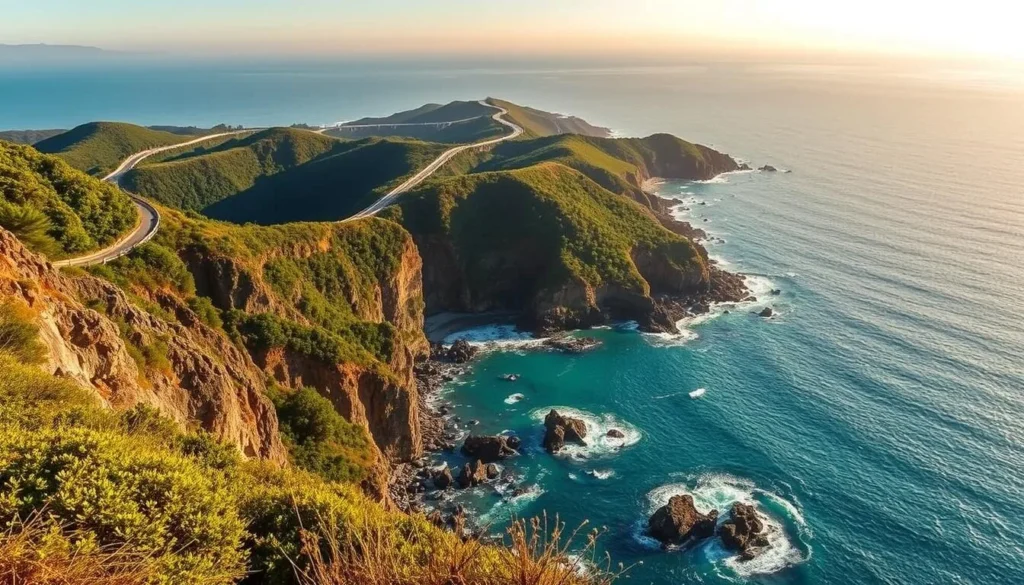
Eastern Coast Highlights
The eastern coast of the Izu Peninsula is characterized by its unique geological features, including the famous Jogasaki Coast. This area is a haven for nature lovers and photographers, with its volcanic rock formations, suspension bridges, and scenic hiking trails. Atami Sun Beach is another highlight, offering a resort-style beach experience with amenities and activities for all ages.
- Explore the dramatic Jogasaki Coast with its unique volcanic rock formations.
- Discover the accessible beaches of the eastern coast, including Atami Sun Beach.
- Learn about the scenic driving routes that connect the eastern coastal towns.
The eastern coast is also dotted with viewpoints and photo spots, making it a paradise for those who love capturing beautiful landscapes. Whether you’re interested in nature, photography, or simply enjoying the views, the eastern coast of the Izu Peninsula has something for everyone.
Mount Fuji Viewing Spots in Izu Peninsula
For those seeking the perfect Mount Fuji view, the Izu Peninsula is a treasure trove of picturesque spots that are sure to impress. The peninsula’s unique geography and proximity to Mount Fuji make it an ideal location for witnessing the mountain’s majesty. In this section, we will explore some of the best Mount Fuji viewing spots in the Izu Peninsula.
Koganezaki Park: Prime Fuji Viewpoint
Koganezaki Park is renowned for its stunning views of Mount Fuji, making it a must-visit destination for anyone traveling to the Izu Peninsula. The park offers a unique vantage point that frames Mount Fuji against the backdrop of the Pacific Ocean, creating a breathtaking visual experience.
Kumomi Omoide Misaki: Perfect Alignment
Kumomi Omoide Misaki, or Kumomi Cape, is another exceptional spot for viewing Mount Fuji. The cape’s rugged coastline and the alignment of Mount Fuji with the horizon create a picturesque scene that is perfect for photography.
Lover’s Cape Gold Bell
Lover’s Cape, also known as Koibito-saki, is a scenic spot that offers beautiful views of Mount Fuji, especially during the golden hour. The cape’s name is derived from the romantic ambiance it creates, making it a popular spot for couples.
Mishima Sky Walk: A Modern Attraction
The Mishima Sky Walk is Japan’s longest pedestrian suspension bridge, stretching 400 meters at a height of 70 meters above ground level. It provides one of the closest and most impressive views of Mount Fuji when weather conditions are favorable. Visitors can also enjoy the Sky Garden, which features beautiful arrangements of seasonal plants and flowers. For the more adventurous, there are options to try the long zip line or rent a Segway/mountain bike.
In conclusion, the Izu Peninsula offers a diverse range of Mount Fuji viewing spots, each with its unique charm and attractions. Whether you’re looking for a serene park, a rugged cape, or a modern suspension bridge, the Izu Peninsula has something to offer every Mount Fuji enthusiast.
Stunning Beaches of Izu Peninsula
The beaches of the Izu Peninsula are a treasure trove of natural beauty, waiting to be explored. With its picturesque coastline, Izu Peninsula boasts some of Japan’s most beautiful and serene beaches, offering a perfect blend of relaxation and adventure.
Shirahama Beach: White Sand Paradise
Shirahama Beach is a stunning white sand paradise that attracts visitors from all over. Its crystal-clear waters and picturesque surroundings make it an ideal spot for swimming, sunbathing, and relaxation. The beach is well-maintained, with facilities such as restrooms, showers, and food stalls, ensuring a comfortable experience for visitors.
Atami Sun Beach: Accessible Beauty
Atami Sun Beach is another popular destination, known for its accessibility and beautiful surroundings. Located near Atami Station, it’s easily reachable by train. The beach offers a range of activities, including swimming and water sports, making it a great spot for families and adventure-seekers.
Hidden Beach Gems in Southern Izu
The southern part of the Izu Peninsula is home to some hidden beach gems, such as Nabetahama Beach and Maiiso Beach. Nabetahama Beach is a cozy cove-type beach flanked by lush-green cliffs, with super clear water, making it perfect for spending an afternoon. Maiiso Beach, on the other hand, is expansive, with great water quality, ideal for swimming and other water activities.
Best Beaches for Swimming and Water Activities
For those looking for the best beaches for swimming and water activities, the Izu Peninsula has plenty to offer. Hirizo Beach, although rocky, is excellent for snorkeling due to its unique aquatic landscape and vibrant marine life. Other beaches like Shirahama and Maiiso are ideal for swimming, with their clear waters and gentle currents.
When engaging in water activities, it’s essential to consider safety factors such as water temperatures and currents. The Izu Peninsula’s beaches generally have moderate water temperatures, making them suitable for swimming during the warmer months. However, it’s always a good idea to check the current conditions before heading out.
The facilities available at different beaches vary, with some offering equipment rental and lifeguard services. Visitors should check the amenities at their chosen beach to plan their day accordingly.
Izu Peninsula, Japan: Best Things to Do – Top Picks
From suspension bridges to extinct volcanoes, the Izu Peninsula is home to some of Japan’s most breathtaking attractions. This region offers a diverse range of activities and stunning natural beauty, making it a must-visit destination for travelers.
Jogasaki Coast and Suspension Bridge
The Jogasaki Coast is known for its dramatic scenery and unique rock formations. One of its main attractions is the suspension bridge that offers visitors a thrilling way to experience the coastline. As you walk across the bridge, you can enjoy panoramic views of the Pacific Ocean and the surrounding landscape.
The area around the Jogasaki Coast is perfect for hiking and offers several trails with varying levels of difficulty. Visitors can enjoy water activities such as surfing and kayaking in the crystal-clear waters below.
Kawazu Seven Waterfalls
Located in the heart of the Izu Peninsula, the Kawazu Seven Waterfalls are a series of natural waterfalls that are surrounded by lush vegetation. This serene environment is ideal for a relaxing day out, with plenty of opportunities for hiking and picnicking.
Visitors can explore the waterfalls and enjoy the cool mist on their faces. The area is also known for its beautiful cherry blossoms in the spring, making it a popular destination during the blooming season.
| Waterfall Name | Height | Notable Feature |
|---|---|---|
| Kawazu No. 1 | 20 meters | Accessible path |
| Kawazu No. 2 | 15 meters | Surrounded by flora |
| Kawazu No. 3 | 10 meters | Quiet, secluded spot |
Mount Omuro: Extinct Volcano Experience
Mount Omuro is an extinct volcano that offers visitors a unique experience. The mountain is relatively easy to climb, with a well-maintained path that leads to the summit. From the top, visitors can enjoy stunning views of the surrounding landscape and the ocean.
The area around Mount Omuro is also known for its beautiful gardens and flora. Visitors can explore the surrounding countryside and enjoy the local scenery.
Dogashima Cave Tour
The Dogashima Cave is a natural wonder that is accessible by boat tour. Visitors can explore the cave and enjoy the stunning rock formations and crystal-clear waters. The cave is a result of millions of years of geological activity, and its unique shape makes it a fascinating destination.
- Discover the fascinating Dogashima Cave system, accessible by boat tour when the tide is high.
- Learn about the unique Tombolo Land Bridge phenomenon that connects Zo Island to the mainland during low tide.
- Explore the options for experiencing this natural wonder, from boat tours that enter the sea caves to viewpoints from above.
The tour provides an unforgettable experience, with the opportunity to see the cave from different angles and appreciate its natural beauty.
Historical and Cultural Attractions
The Izu Peninsula, with its unique blend of history and culture, invites you to discover its many fascinating attractions. As you explore this region, you’ll encounter a rich tapestry of historical sites, cultural landmarks, and traditional experiences that showcase the essence of Japan.
Shimoda and Perry Road: Japan’s Opening to the West
Shimoda, a significant port town in the Izu Peninsula, played a crucial role in Japan’s history, particularly during the country’s opening to the West. You can walk along Perry Road, a charming street lined with traditional buildings, and visit the Shimoda Black Ship History Museum to learn about this pivotal period. The town’s historic significance is palpable as you explore its quaint streets and admire the preserved architecture from the Edo period.
As you stroll through Shimoda, take a moment to appreciate the town’s cultural heritage, which is deeply intertwined with its history. The area is dotted with temples and shrines, such as Ryūtoku-in Temple, which features a beautiful garden and traditional architecture. Visiting Shimoda provides a unique glimpse into Japan’s past and its interactions with the Western world.
Shuzenji: Izu’s “Little Kyoto”
Shuzenji, often referred to as “Little Kyoto,” is a town that embodies the cultural and historical essence of the Izu Peninsula. You can explore the Shuzenji Temple, a historic Buddhist temple complex that dates back to the 9th century, and enjoy the serene gardens and traditional architecture. The town is also known for its bamboo forest, which offers a peaceful retreat from the hustle and bustle of daily life.
As you wander through Shuzenji, you’ll discover a plethora of cultural experiences, from traditional tea houses to local crafts. The town’s historic ambiance and natural beauty make it an ideal destination for those seeking a deeper understanding of Japanese culture and history.
Toi Gold Mine
The Toi Gold Mine, once the second-largest gold mine in Japan, is now a fascinating museum that offers a glimpse into the country’s mining history. You can explore the mine’s tunnels, learn about the mining techniques used during its operation, and marvel at the world’s largest gold ingot, weighing an impressive 250 kilograms. The mine also features interactive displays that provide insight into the lives of the miners and the historical significance of gold mining in the region.
Visiting the Toi Gold Mine is a unique experience that combines history, culture, and adventure. You can also explore the surrounding area, which includes the Seiun-ji Temple with its distinctive entry gate and jizo statues. The Toi Gold Mine is a must-visit attraction for anyone interested in the history and cultural heritage of the Izu Peninsula.
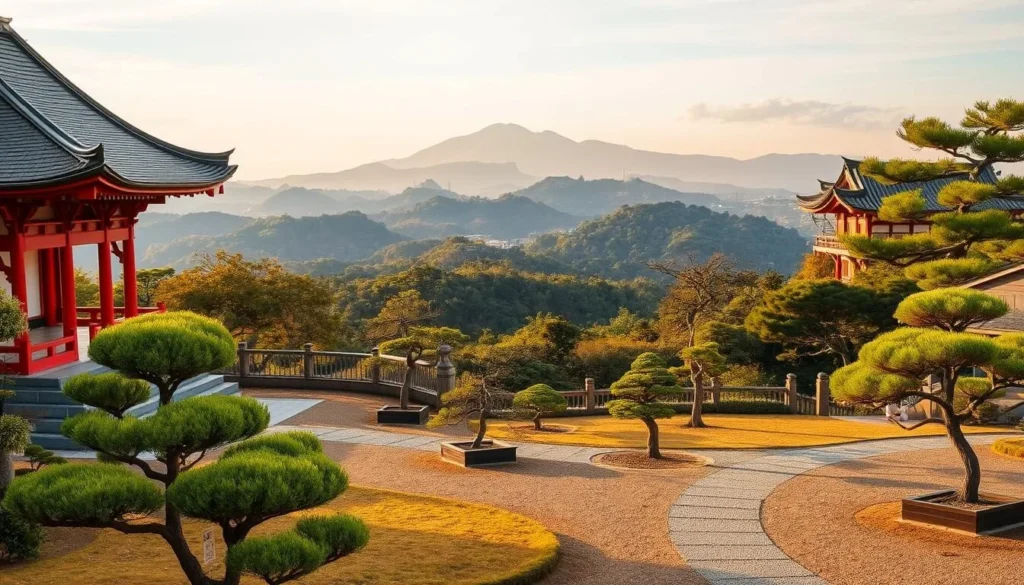
Cherry Blossom Viewing in Izu Peninsula
With its distinct microclimate, the Izu Peninsula becomes a haven for early cherry blossoms. The region’s unique climate allows for a longer viewing season, making it an ideal destination for those looking to enjoy cherry blossoms without the crowds often found in more popular locations.
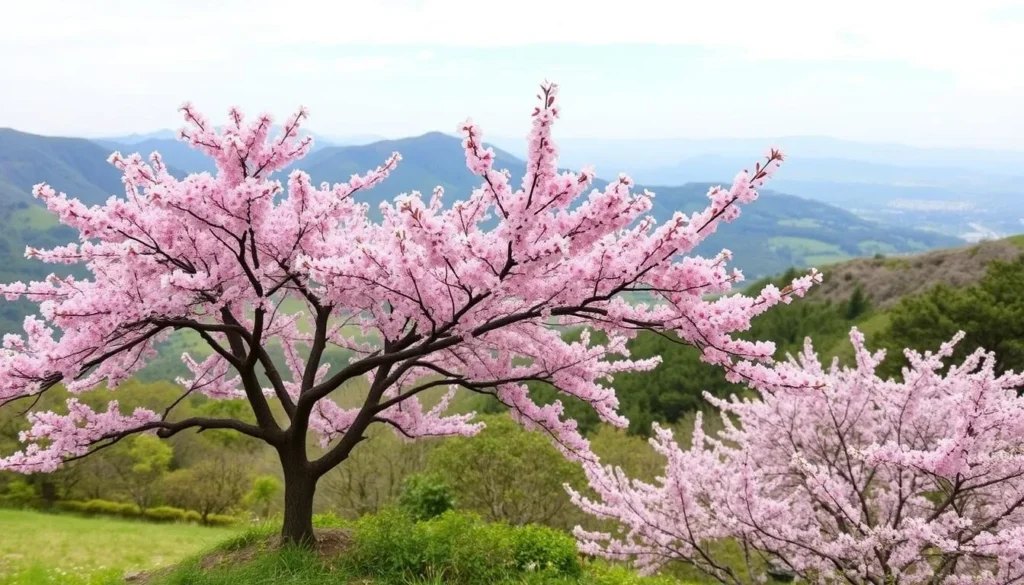
Kawazu Cherry Blossoms: Early Bloomers
The Kawazu cherry blossoms are a highlight of the Izu Peninsula’s spring season, blooming as early as late January. These beautiful blossoms are a variety of Prunus lannesiana, known for their vibrant pink hue and delicate beauty.
Kawazu’s blossoms attract visitors from all over, offering a serene and picturesque landscape. The early bloom allows for an extended cherry blossom season, giving travelers a broader window to plan their visit.
Minami-Izu Cherry Blossom Park
Located in Minami-Izu, this park is a gem for cherry blossom enthusiasts. The park features rows of cherry blossom trees alongside a calm river, where visitors can enjoy kayaking or paddleboarding amidst the blossoms. The serene atmosphere makes it easy to spend half an hour to an hour admiring the view.
At the end of the park, a rapeseed field adds to the picturesque scenery, creating a beautiful contrast with the blossoms. This combination of natural beauty makes Minami-Izu Cherry Blossom Park a must-visit during the spring season.
Best Time for Cherry Blossoms in Izu
Understanding the time and progression of cherry blossoms in Izu Peninsula is crucial for planning your visit. The region’s microclimate means that the blossoms start early, with Kawazu being one of the first places to see blooms.
As the season progresses, different areas come into bloom, offering a staggered viewing experience. By checking reliable forecasting resources, you can plan your trip to coincide with the peak bloom, ensuring an unforgettable experience.
Hiking and Nature Trails
Explore the natural beauty of the Izu Peninsula through its various hiking trails and nature paths. The area offers a diverse range of outdoor experiences, from coastal walks to mountain hikes, catering to different interests and fitness levels.
Jogasaki Coastal Trail
The Jogasaki Coastal Trail is a scenic hiking path that offers breathtaking views of the Pacific Ocean. This trail is ideal for a day out, with its accessible route and stunning vistas. As you walk along the coast, you’ll experience the unique flora and fauna of the area.
Mount Amagi Hiking Routes
For those looking for a more challenging hike, the Mount Amagi routes provide a guide to exploring the mountain’s diverse ecosystems. The trails range from moderate to difficult, offering a rewarding experience for hikers. The panoramic views from the top are a highlight of the hike.
Bamboo Forest Path in Shuzenji
Take a peaceful walk through the Bamboo Forest Path in Shuzenji, a great mini alternative to Arashiyama in Kyoto. This tranquil path winds through towering bamboo stalks, creating a magical atmosphere. It’s an ideal day trip, complementing the historic temple and onsen experience in Shuzenji.
Culinary Experiences in Izu Peninsula
Culinary adventures await in Izu Peninsula, where the fusion of fresh ingredients and traditional cooking methods creates unforgettable dining experiences. As you explore this beautiful region, you’ll discover a variety of culinary delights that reflect the local culture and the area’s rich natural resources.
Fresh Seafood Kaiseki at Ryokans
One of the highlights of visiting Izu Peninsula is experiencing the exquisite kaiseki meals offered at traditional ryokans. These multi-course dinners feature the freshest seafood, carefully prepared to showcase the natural flavors of the ingredients. Many ryokans in the area source their seafood directly from local fishing villages, ensuring that every dish is a true representation of the region’s culinary excellence.
When dining at a ryokan, you can expect to be treated to a guide to the various dishes, explaining the preparation methods and the ingredients used. This enhances the dining experience, allowing you to appreciate the culinary artistry on display. For those looking for a truly immersive experience, some ryokans offer cooking classes where guests can learn to prepare kaiseki themselves.
Wasabi Farms and Tastings in Izu City
Izu City is famous for its wasabi cultivation, and visitors can explore wasabi farms to learn about the cultivation process and sample some of the freshest wasabi available. Wasabi farming is a significant part of the local economy, and touring a farm provides insight into this traditional practice. Many farms offer tastings, allowing you to experience the vibrant flavor of freshly grated wasabi.
In addition to wasabi, some farms also cultivate other local specialties, providing a broader understanding of the region’s agricultural practices. These tours are not only educational but also offer a unique opportunity to see the care and dedication that goes into producing high-quality wasabi. After the tour, be sure to visit the on-site shops to purchase some wasabi products as souvenirs.
Local Specialties: Spider Crab and Unagi
Izu Peninsula is renowned for its seafood, and two of the local specialties you shouldn’t miss are spider crab and unagi (freshwater eel). The spider crab, known for its sweet meat and impressive size, is a delicacy in the region’s fishing towns. You can enjoy this dish at various restaurants throughout the peninsula, each offering their own take on this local favorite.
Unagi is another must-try when in Izu Peninsula. The region’s food culture places a high value on the preparation of unagi, with skilled chefs grilling it to perfection. A recommended spot to try unagi is in Kawazu, a small shop where the chef expertly grills and prepares the eel in front of you. Not only is the food here delicious, but it’s also priced reasonably, being around 25% cheaper than in major cities like Kyoto or Tokyo.
When exploring the culinary delights of Izu Peninsula, be sure to visit various restaurants to sample these and other local specialties. The region’s commitment to using fresh, local ingredients ensures that every meal is a memorable one. Whether you’re a guide to the area or just visiting, the culinary experiences in Izu Peninsula are sure to leave a lasting impression.
Day Trips from Izu Peninsula
Day trips from the Izu Peninsula offer a range of experiences, from hot springs to island getaways. The peninsula’s strategic location makes it an ideal base for exploring various destinations in Japan.
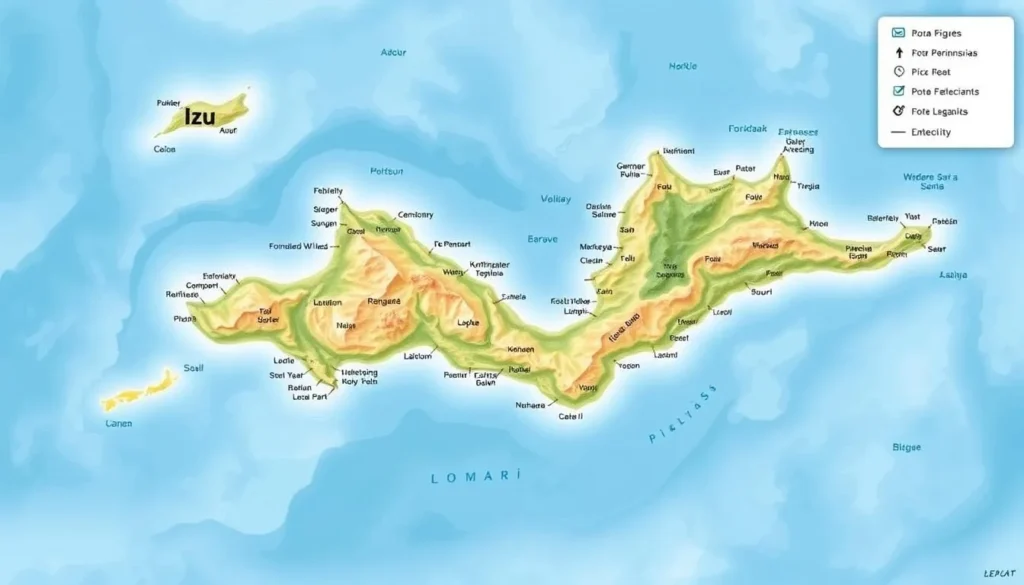
Hakone: Hot Springs and Art
Hakone is a popular day trip destination from the Izu Peninsula, known for its hot springs, scenic Lake Ashi, and artistic attractions. You can take a cruise on Lake Ashi, ride the Hakone Ropeway, or visit the Owakudani Valley for stunning views of Mt. Fuji.
For art enthusiasts, the Pola Museum of Art is a must-visit, featuring an impressive collection of Japanese art. After a day of exploring, relax at one of the many hot spring resorts in the area.
Atami: Resort Town Experience
Atami is a coastal hot spring town that has been a favorite weekend getaway for city dwellers. With its rich history and natural beauty, Atami offers a unique blend of relaxation and cultural experiences.
You can enjoy the town’s hot springs, visit the Atami Castle, or take a stroll along the scenic coastal promenade. Atami’s accessibility via the Tokaido-Sanyo Shinkansen makes it an ideal day trip destination from the Izu Peninsula.
Izu Islands: Further Exploration
The Izu Islands are a chain of volcanic islands extending south from the Izu Peninsula, offering a chance to explore remote and pristine natural environments. You can visit islands like Oshima and Toshima, which are accessible by ferry or high-speed jet.
The islands are known for their unique ecology, with some designated as national parks. Enjoy activities such as dolphin watching, volcano hiking, and snorkeling in crystal-clear waters. The Izu Islands are perfect for nature lovers and adventure seekers.
Planning Your Izu Peninsula Itinerary
To truly experience the essence of Izu Peninsula, it’s essential to plan your trip thoughtfully, taking into account the time you have available. With its diverse landscapes and rich cultural heritage, Izu Peninsula offers a unique travel experience that can be tailored to fit various timeframes. Whether you’re looking for a quick getaway or an extended vacation, the peninsula has something to offer for every kind of traveler.
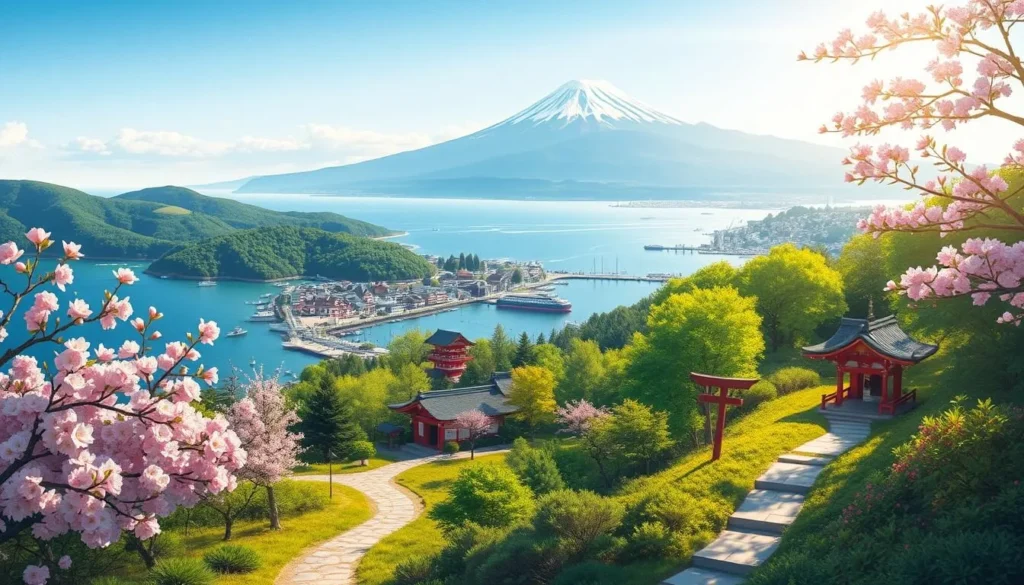
One-Day Itinerary: Eastern Izu Highlights
For those with limited time, a one-day itinerary focusing on Eastern Izu can be a great way to experience some of the peninsula’s most popular attractions. Start your day early at Jogasaki Coast, where you can walk across the suspension bridge and enjoy breathtaking views of the Pacific Ocean. Next, head to Atami Sun Beach for some relaxation and perhaps a quick dip in the sea. If you’re visiting during the right season, be sure to check out the Kawazu Cherry Blossoms. End your day with a visit to the historic town of Shimoda, exploring Perry Road and enjoying local cuisine.
This condensed itinerary gives you a taste of what Izu Peninsula has to offer, but keep in mind that a more leisurely pace would allow for a deeper appreciation of the area.
Three-Day Itinerary: Complete Izu Experience
With three days, you can explore more of what Izu Peninsula has to offer. On the first day, follow the one-day itinerary mentioned above. On the second day, head to the western part of the peninsula, visiting the scenic town of Toi and exploring the Toi Gold Mine. Take some time to relax at one of the many onsen towns, such as Shuzenji or Rendaiji. On the third day, consider a hike in the Amagi Mountains or a visit to the Dogashima Cave Tour. This itinerary allows you to experience the diversity of the peninsula, from its beautiful coastlines to its cultural and historical sites.
Five-Day Itinerary: Slow Travel Around the Peninsula
For a truly immersive experience, consider a five-day trip to Izu Peninsula. This allows you to circumnavigate the peninsula at a leisurely pace, stopping at various attractions and experiencing the local culture. Day one can be spent exploring the eastern coast, as described in the one-day itinerary. On the second day, head west, stopping at the Koganezaki Park for stunning views of Mount Fuji. Continue to the western coast, where you can enjoy the scenic drives and visit towns like Toi. The third day can be spent exploring the southern tip of the peninsula, visiting places like Irōzaki Lighthouse and the southernmost beaches. On the fourth day, return northward, stopping at various onsen towns and cultural sites. The final day can be used to revisit any favorite spots or explore areas that were skipped earlier.
This extended itinerary not only covers the main attractions but also allows for time to enjoy the natural beauty, local cuisine, and perhaps even some off-the-beaten-path discoveries. It’s a great way to experience the full depth of what Izu Peninsula has to offer as a travel guide.
Practical Travel Tips for Izu Peninsula
As you embark on your journey to Izu Peninsula, having the right information about transportation, seasons, and budgeting can make all the difference. The Izu Peninsula is a versatile destination that offers something unique across different times of the year and can be explored in various ways depending on your preferences and budget.
Getting Around: Car Rental vs. Public Transport
Deciding how to get around Izu Peninsula is a crucial part of planning your trip. You have two primary options: renting a car or using public transportation. Renting a car gives you the flexibility to explore the peninsula at your own pace, stopping at scenic spots and enjoying the coastal drives without being tied to a schedule. On the other hand, public transportation is convenient and can be more budget-friendly, with buses and trains connecting major towns and attractions.
| Transportation Method | Flexibility | Cost | Scenic Routes |
|---|---|---|---|
| Car Rental | High | Moderate to High | Excellent for scenic drives |
| Public Transport | Low to Moderate | Low to Moderate | Good for major attractions |
For a day trip, public transport might be sufficient, but for a more leisurely travel experience, a car rental could be the better choice.
Best Seasons to Visit Different Areas
Every season has its highlight in the Izu Peninsula. Spring (March to May) offers mild temperatures and beautiful cherry blossoms, making it a popular time to visit. Summer (June to August) is ideal for beaches and water activities. Fall (September to November) brings mild temperatures again and stunning fall foliage. Winter (December to February) is quieter, with fewer tourists, and is ideal for hot springs and potentially clearer views of Mount Fuji.
Understanding the best time to visit different areas can help you plan your trip according to your interests, whether it’s enjoying the beaches, hiking, or simply relaxing in a ryokan.
Budget Considerations and Money-Saving Tips
Izu Peninsula can be experienced on various budget levels, from luxury ryokan stays to more economical options. Understanding the typical costs associated with transportation, accommodation, dining, and activities can help you plan your expenses. To save money, consider visiting during the shoulder seasons when prices are lower, and take advantage of transit passes for public transportation.
- Look for ryokans that include meal plans to save on dining costs.
- Use public transport or consider purchasing a pass for frequent travel.
- Plan your activities according to the season to enjoy free or low-cost attractions like beaches and hiking trails.
By being mindful of your expenses and making a few strategic choices, you can enjoy a fulfilling trip to Izu Peninsula without breaking the bank.
Conclusion: Why Izu Peninsula Should Be on Your Japan Itinerary
For travelers seeking an authentic Japanese experience without the crowds, the Izu Peninsula is a hidden gem worth exploring. This off-the-beaten-path destination offers a serene escape from Japan’s bustling cities, embodying the country’s natural beauty and rich cultural heritage.
The Izu Peninsula’s unique appeal lies in its ability to provide a tranquil atmosphere, allowing visitors to fully appreciate the beauty of Japan. As you drive through the quiet coastal countryside, you’ll be treated to stunning views and have the opportunity to stay at quaint Ryokans owned by local families. The absence of crowds, unlike in major cities like Tokyo, Osaka, or Kyoto, means you can enjoy a more personal and intimate experience with the local culture and scenery.
The diverse attractions in Izu Peninsula make it a special destination. From its volcanic landscapes and hot springs to its beautiful beaches and Mount Fuji views, there’s something for every kind of traveler. Whether you’re interested in history, nature, or simply relaxing, Izu Peninsula has it all. The peninsula’s western part, in particular, offers some of the best views of Mount Fuji, a experience made even more special by the lack of crowds.
Izu Peninsula serves as a perfect complement to Japan’s major cities, offering a counterpoint to urban exploration with its natural beauty and relaxation. After experiencing the hustle and bustle of city life, a trip to Izu Peninsula provides a welcome respite, allowing you to recharge in a serene and picturesque setting.
One of the significant advantages of visiting Izu Peninsula is its value proposition. Experiences such as staying at Ryokans and enjoying quality dining often cost less than in more touristy areas, making it an attractive option for travelers looking for an authentic experience without breaking the bank.
Whether you’re planning a day trip from Tokyo or an extended stay to fully explore this coastal gem, Izu Peninsula is a destination that should be on your Japan itinerary. With its unique blend of natural beauty, cultural heritage, and relaxation, it’s an experience you won’t soon forget. So, take the time to travel to Izu Peninsula and discover the charm that makes it a standout destination in Japan.
In conclusion, the Izu Peninsula is 100% worth visiting. Its off-the-beaten-path nature, diverse attractions, and relaxing atmosphere make it an ideal destination for travelers seeking an authentic Japanese experience. As you plan your trip to Japan, be sure to include Izu Peninsula in your travel guide for a memorable experience.
The above is subject to change.
Check back often to TRAVEL.COM for the latest travel tips and deals.
